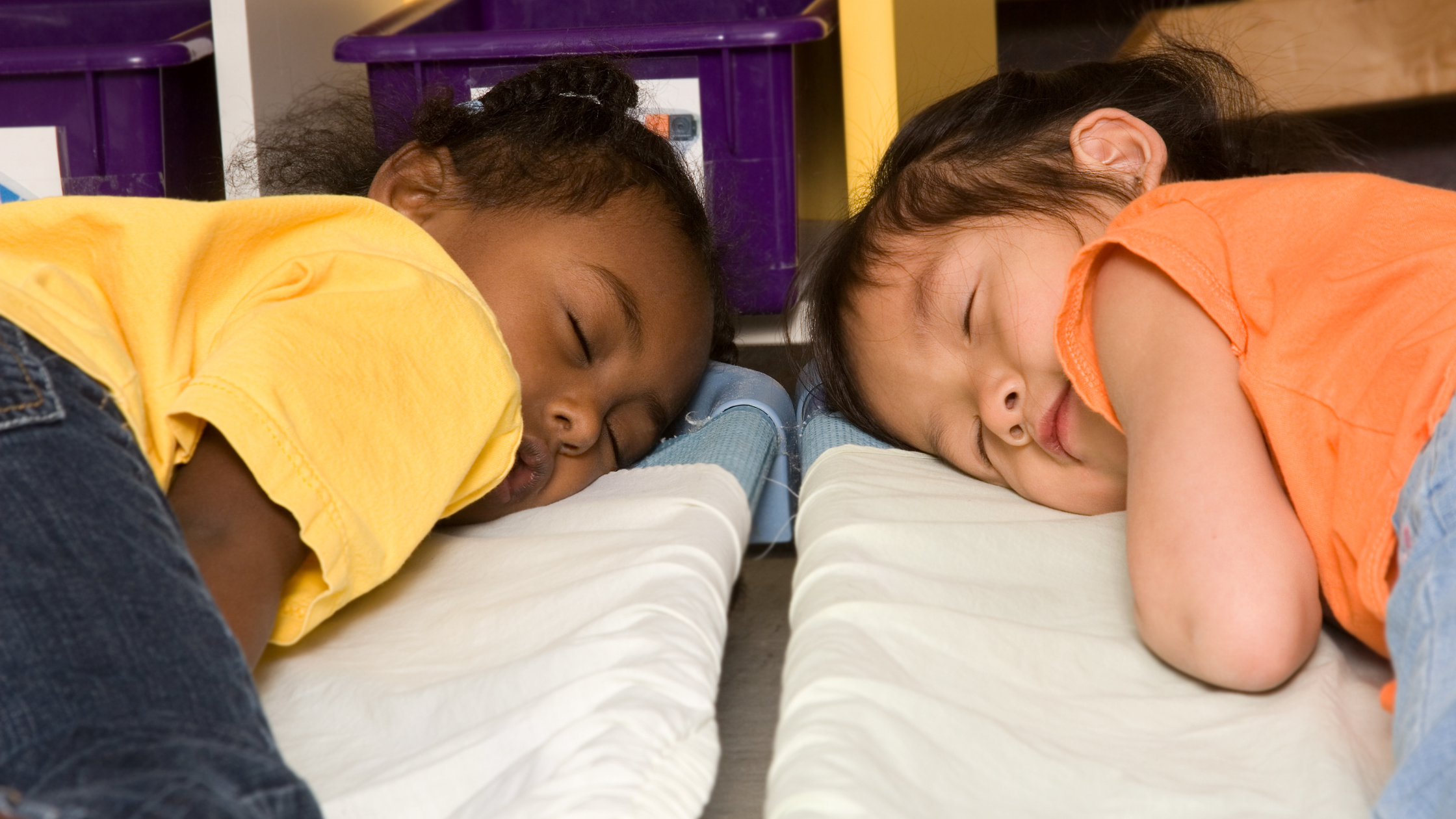
Sleep is vital for childhood development and learning. It affects the child's health, mood, and ability to stay on track for their milestones. A lack of sleep can have long-term effects on the child's academic performance and emotional health.
However, as children grow, their need for sleep can decrease. There are recommendations based on the child's age, and many times they achieve these hours with naps implemented into their daily schedule. So, this may raise the question, when should kids stop napping?
The exact age varies, and depends on individual factors: maturity, preschool/daycare, and nighttime sleeping habits. At about age three, the majority of children will still take at least one nap per day. About sixty percent of four-year-olds take naps, but by age five, most children no longer need a nap. The older children get, the more that number continues to shrink, with almost no children napping by the age of seven. Continued napping may be a sign of an underlying issue, and will need to be discussed with your pediatrician. Continue reading to learn more about the recommendations for children and naps.
Signs that children should stop napping
There is no set age where children will stop napping, so it's vital to pay attention to your child's needs and adjust their schedule accordingly. In general, they should no longer nap when they don't need one to be energized all day. They stop having that point in the middle of the day where they are cranky and are showing that they are sleep deprived.
Most children will stop napping naturally, with some common signs that will let you know when that time has arrived:
- Trouble falling asleep at nap time. This usually will look like the child wanting to talk or play at nap time. If they are fussy, then they most likely still need a nap, but may need the timing of the nap adjusted.
- They have trouble falling asleep at night because they are probably getting too much sleep during the day. Longer/late naps can delay your child's ability to fall asleep. Instead of pushing your child's bedtime later, it's better to have shorter naps.
- They wake up very early in the morning because their naps have fulfilled some of their required sleep time so they no longer feel the need to sleep as long during the night.
Signs that children should continue to nap
Infants will nap anywhere from 1-4 times a day. As the brain matures and they get used to being in the outside world, they will better align with the natural schedule of the day have and fewer naps. By 18-24 months, most children only need one nap a day, for less than an hour a day for optimal bedtime sleepiness.
There are a few signs to look out for that will tell you if your child needs to continue napping. Those whose behavior shifts negatively at night - as in they become moodier or more irritable - probably need to continue napping. A lack of sleep can have a negative impact on their emotions. If your child is struggling to stay awake during the day after a full night of sleep, then they too will still need a daily nap. You can decrease the length of the nap to help them transition from naps.
Transitioning children from naps
Changing from daily naps to no naps can take time and be a stressful situation. For a better transition, instead of abruptly stopping naps, have children use that time for a quiet activity where kids can decide if they need to sleep or play quietly. This is often implemented at many daycares or preschools, and is probably something you should ask about when choosing the best option for your child.
The quiet time should be just as structured as nap time and take place in the same location each day. Children should have a stimulating activity as well so that they are tired come bedtime. This can include reading, putting together a puzzle, or coloring. This rest can still help with memory consolidation even though they aren't sleeping.
Activities should not be something that could induce drowsiness, like driving, or watching TV. Parents should also avoid being loud as well so that children can focus on playing quietly. Loud environments may be distracting for the child and be counterproductive to what that time is dedicated for.
Sleep changes without naps
When children are no longer taking naps, they may need more sleep at nighttime. It is recommended that children go to sleep earlier in the evening so they can get the proper amount of sleep. Take a look at what time the child needs to wake up and then go backwards, counting out the total number of hours that they need.
To encourage sleep, parents should have a regular bedtime routine for their children. These activities should be quiet and as non-stimulating as possible. Baths, reading, playing with stuffed animals, and spending quality family time together are all great activities.
There may be days when the child is tired and occasionally naps. Growth spurts, changes in routine, and activity level in preschool may cause children to sleep during the day. Kids can still nap during this time, as long as the nap isn't too long or so close to bedtime that it interferes with their ability to go to sleep.
Sleep changes are normal throughout a child's development, but if you're ever concerned about the possibility of a sleeping disorder, then please click the orange button below to take a free online sleep test and talk with one of our sleep health professionals.
Source:
https://www.sleepfoundation.org/children-and-sleep/when-do-kids-stop-napping
